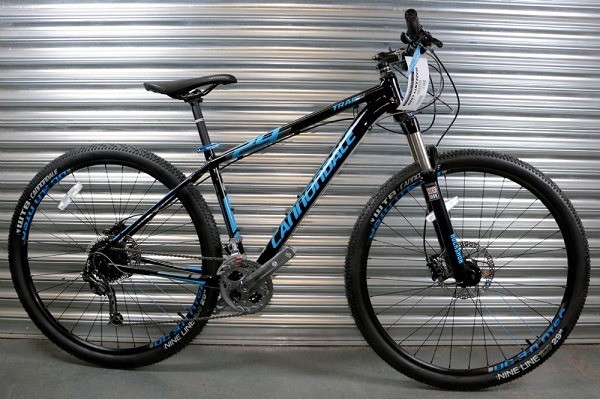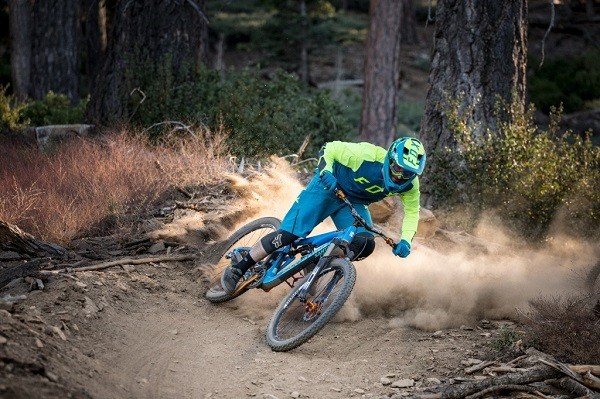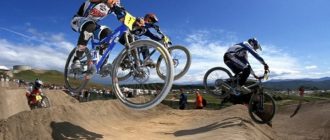Trail riding is considered by many to be an extreme sport discipline, and some are hearing the trendy word for the first time. Trail bikes do not set speed records. They are designed for riding on forest and mountain roads with a lighter extreme. For the cyclist who wants to pedal harder and jump higher on the bump, the terrain is not important. The owner of a two-wheeler knows how to ride hard downhill and control the bike on the track. The main thing – a sense of freedom, riding for fun in natural landscapes, comfort, and good company. Let’s understand why expensive mountain bikes differ from their “brothers”, and riders in mega-cool equipment called superbikers.
What is trail riding?
The term, which refers to Cross-country—what-it-is–nuances running, appeared in 1995 and was officially adopted by the International Academy of Athletics (UK). The forerunner of trailriding was fell-running, which took shape in the 19th century. At that time the English organised competitions in mountainous conditions to select the best racers for the kings. Much later appeared guide racing, in which local residents who knew the area well participated. The winners gained the right to work with visiting tourists. In today’s world, international mountain bike races are held on the volcanic landscape of the Canary Islands, the valley of Chamonix (France) and other beautiful places on the planet. In 2021, athletes from 22 countries on six continents will run trails.
The universal name was transferred to cycling. Trail means “path,” while riding means “horseback riding. The trendy style of riding was “promoted” by marketers, and prices for bicycles with cool equipment doubled. In 2013, the International Trail Guiding Organization was formed, which has distinctive features. Mountain or forest trails are made for non-stop cycling. After reaching the destination point, the biker rests for a while, lifts the saddle with a special device (shackle), and sets off again. Tracks vary in the degree of extreme. Some areas of complexity are equal to the tracks for downhill. In contrast to the disciplines of athletics, cycling has no strict rules and restrictive framework. There are no hard descents or long spans for the cyclist. Free riding off the prepared tracks is compared to a kind of skiing – freeride.
Features
Trail bikes are made for riding on trails, on which there are outcroppings, roots of trees, unexpected obstacles. In areas with stones will have to work well with the pedals. Accordingly, the bike must differ from other mountain models. Characteristic features:
- the presence of two springs;
- shock absorber stroke – 120-150 mm;
- minimal adjustment of compression and rebound;
- there is a lock, providing for riding the bike up and down;
- pneumatic seatpost;
- large sprocket teeth – 40-52 pcs;
- shifting lever on the handlebar;
- wheel diameter – 27,5-29 inches;
- transmission – 1×11, 1×12;
- angle of steering – 68-69 degrees;
- aluminum or steel frame with lowered top tube (closer to the saddle);
- hydraulic disc brakes that allow you to slow the bike and control the biker’s efforts;
- comfortable saddle for sport riding;
- wide V-shaped handlebar;
- full speed range.
Unlike sport trailrunning (running on natural terrain), which requires special sneakers and waterproof clothing, a trail biker does not need a full protective kit. It is enough to have a normal helmet, kneepads, backpack with a supply of water and the necessary tools.
The best bikes for trail riding
For fans of cycling in the mountains, an extensive network of singletracks across the planet has been created. In Norway, for example, flat and smooth trails in bike parks are juxtaposed with trails for hiking. In 2015, Israel opened three cycle tracks in the Ben Shemen forest with a total length of 65 kilometers. Cyclists, regardless of age, can ride on trails of any difficulty. All children’s shoes and accessories are provided free of charge. Advanced bikers choose difficult tracks. Hundred-meter races with extreme obstacles require lightweight, but reliable bikes. Most often two-pods and hardtails are used.

Cannondale Trail 2015
| Model | Features |
|---|---|
| Cannondale Trail 2015 | Lightweight frame with perfected geometry Signature Fatty fork with needle bearings 27-speed drivetrain Ergonomic saddle Cannondale Platform brand pedals |
| Merida Big.Trail Ultra | Premium all mountain bike Aluminum alloy frame 27.5 inch wheel diameter Double rim Aggressive geometry 12-speed transmission |
| Ibis Ripmo V2 | Model meets the highest racing standards Carbon fiber frame Low-maintenance bushings 76° handlebar angle makes it easy to ride the bike up 118 mm stroke helps maintain maneuverability on difficult terrain 29″ x 2.6″ wheels 7 year warranty |
| Salsa Timberjack XT 29 | Reinforced bike construction High quality equipment Aluminum frame with sporty geometry Premium components Short bottom feathers 12-speed transmission 27.5+ inch wheels 12-speed transmission Adaptive design |
| GT Helion Comp | Mountain twin-saddle 27-speed transmission Professional attachments Air and oil fork Two shock absorbers Stiff springs Comfortable saddle 27.5 inch wheels |
| Forward Next 27.5 3.0 Disc | Agile mountain bike Threadless handlebar Aluminum alloy frame Reusable chain connector Adjustable saddle for a sporty fit Wear-resistant rubber Hydraulic disc brakes |
| Santa Cruz Highball Fox | Universal carbon hardtail Carbon frame Hard tail shock absorption Wheels – 29 inches Seat angle – 73 degrees 27.2mm seatpost 20-speed transmission Weight of bike – 9.5 kg |
Differences from freeride and cross country
Cycling style called free ride requires athletic training of the rider and the presence of a particularly durable bike. Tracks consist of steep slopes up to 30 meters high, bridges, narrow winding paths with sharp turns. Freeride competitions are organized by manufacturers of bicycles and sports equipment. Two-pods up to 18 kg are equipped with tires for extreme riding. Special masks, full-face helmets, shields to protect the spine and other parts of the body are part of the mandatory equipment of the cyclist. At prestigious tournaments the world champion (or a separate continent) is determined with the presentation of a solid prize. In classical freeride professionals take part, in lightweight – amateurs.
Cross country is an extreme direction in cycling, which cannot be compared to cycling in the mountains or forests. The race takes place on Cross-country—what-it-is–nuances terrain, where trails are laid out to meet the requirements of the IOC. The bikes must meet special technical specifications, and bikers need serious physical training, fast reactions, and endurance. Cross-country models refer to a type of mountain bike, but have significant differences. Lightweight, dynamic two-wheelers with an aggressive riding style should have good Cross-country—what-it-is–nuances ability on difficult trails and high speed performance.
Trail riding is considered an intermediate between Enduro and XC. Trail bikes are not race bikes. They are designed to ride Uphill—how-to-learn–tips and then immediately head downhill on the fast descents. Models for fun Cross-country—what-it-is–nuances riding do not require compliance with the indicators of weight and geometry, special sports equipment. These bikes are lighter than their “brothers” and are great to ride both downhill and Uphill—how-to-learn–tips. Riding does not force the biker into strict speed or distance limits, and allows you to ride for fun with breaks for rest.
Conclusion
The abundance of bikes for trail riding allows you to choose the best model for long-distance rides, Cross-country—what-it-is–nuances riding, aggressive riding with jumps and drifts (controlled skids to keep speed on the track). On comfortable and reliable bikes you can ride confidently Uphill—how-to-learn–tips and have fun going downhill.







